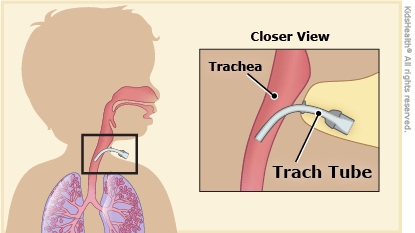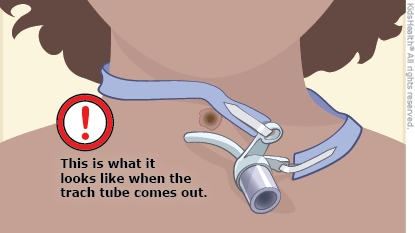A tracheostomy (also called a tracheotomy) creates a surgically made opening (called a stoma) in the front of the neck into the airway (trachea). A tracheostomy (tray-kee-OSS-tuh-me) tube, or trach tube, keeps the pathway open so air can go through the trach tube, into the airway, and get to the lungs. Trach ties hold the tube in place. The word "trach" can refer to the procedure, the opening, or the tube itself.
Your child's care team showed you how to care for your child's trach tube and how to deal with emergencies, such as replacing the tube immediately if it comes out.



Your child:




Who needs a tracheostomy tube? Kids who need to be on a ventilator or who can't breathe through the nose or mouth may need a tracheostomy tube. Trachs can stay in place for a long time.
Can a child with a tracheostomy tube speak? Kids may need to learn new ways to speak with a trach tube in place. Ask your child's health care provider if a speech therapist could help your child.
Are there any clothes my child should avoid? Your child should not wear anything that could block the trach tube, such as a turtleneck. Also avoid fuzzy clothing that could shed into the trach tube.